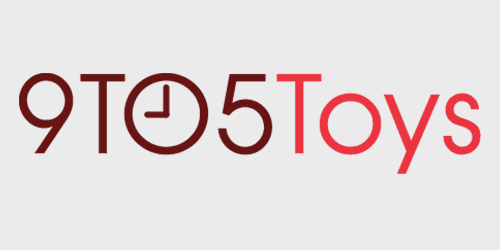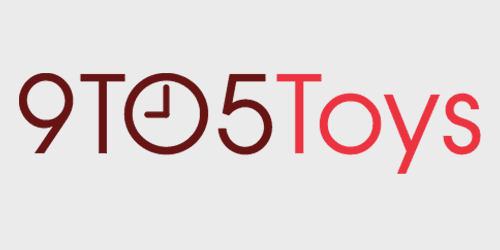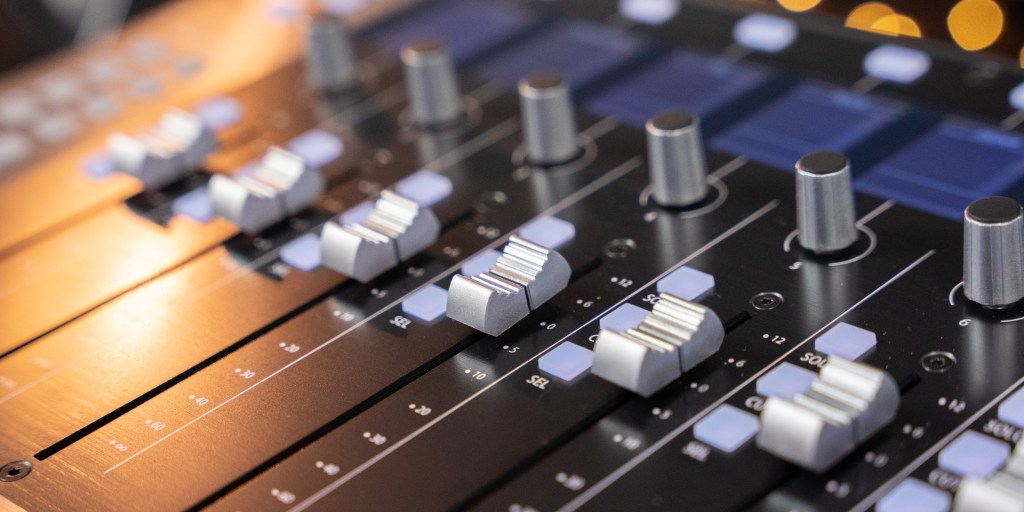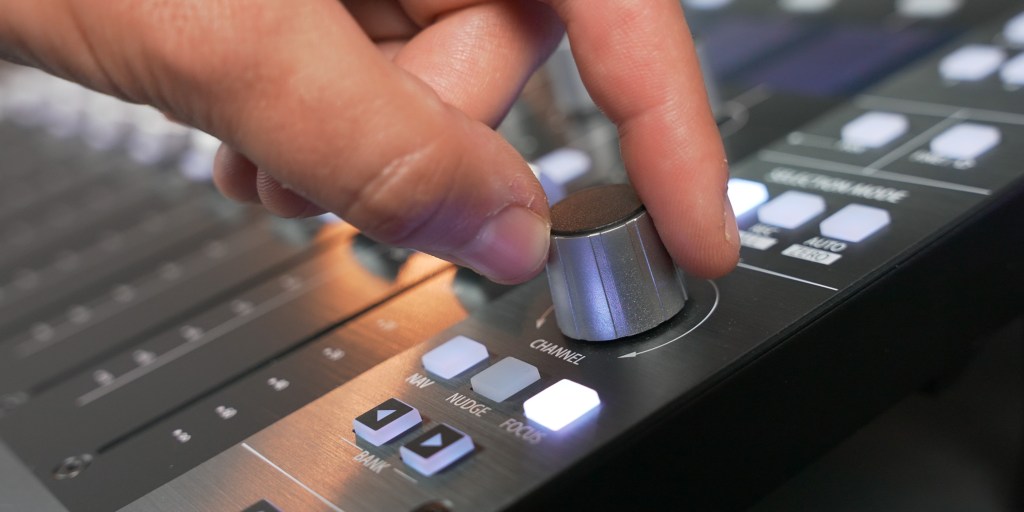
The SSL UF8 DAW control surface is completely overkill for what I do, but following our announcement coverage, they asked if we wanted to take a hands-on look at it and I couldn’t resist. Thankfully, some features do work within Premiere Pro, which is where I edit most of my audio. To take full advantage of the incredible depth of control that the SSL UF8 offers, though, you will need a compatible DAW, or digital audio workstation like Logic, Pro Tools, or Ableton. If you’re interested in learning more about the incredible UF8 and want to see some of my audio workflows within Premiere, be sure to hit the video below.
Overview
At its core, the SSL UF8 is a DAW control surface with eight faders and a whole slew of deep features to give digital audio engineering more of a hands-on feel. 43 assignable buttons make it easy to dial in the UF8 to your exact workflow. Instead of moving a mouse to drag faders and other digital inputs, the UF8 puts that control at your fingertips.
Taking a look at the layout, we of course have the eight faders through the middle. These faders are all touch-sensitive and when powering on the console they put on an impressive show – moving themselves up and down the board.
Across the entire board are different banks of controls. Soft keys in the upper right let you move between different customizable user keys across the top. Beneath the soft keys are selection modes, a large control knob that can control a timeline’s play head in Premiere Pro, and even mouse cursor controls with the four direction buttons in the bottom right.
Along the left are layer keys to jump between different DAW setups and buttons for send/plugin.
James from Studiospares does a great walkthrough of the board if you want to take a closer look at what every single button can do and how he enjoys it in a studio recording setup.
Construction-wise, the UF8 stands up to the impressive build quality that SSL has become known for in the audio world. All of the contact points feel high quality and offer great tactile feedback. It’s definitely more fun to physically move faders, turn knobs, and tweak parameters with assignable buttons.

SSL 360 software
Within SSL 360 software are controls for setting up the UF8. The controller can be programmed to work with up to three DAWs simultaneously with the three different layers which are easy to navigate within the 360 software. This is where those 43 buttons can be assigned to support any workflow. Also, there’s a handy 360 button on the UF8 that quickly brings up the program for quick changes.
SSL UF8 and my audio workflow: video
Setup within Premiere Pro
To get the UF8 set up inside Premiere Pro, first set the layer within SSL’s 360 software to Logic Pro. Then, inside Premiere Pro, navigate to preferences – control surface. Add a new device and select Mackie in the device class dropdown. Then hit settings, select the Mackie Control XT, and hit edit. Make sure it’s set to Mackie Control XT on device type and set to SSL V-MIDI Port 1 for both input and output device.
While the SSL UF8 doesn’t function al fully within Premiere Pro as it does with other dedicated DAWs, it can still control track volume with the faders, adjust pan with the V-Pots, mute, solo, and arm for recording and control the play head in a timeline.

SSL UF8 and my Premiere Pro Audio Workflow
For my normal video workflow, I’ve created a video project template that’s a good starting point. In that template, I know that I will always have my a-roll talking head video and then a separate audio track from my microphone recorded in Audition. I always put my audio in track 3 and use the Audio Track Mixer window with some effects that I’ve saved in the template. Since I pretty much always use the same mic, the Razer Seiren Emote, I have it dialed in to where I like it for that setup and saved when I start up the template. Then, even after I cut everything up, I can make global edits to the entire track from this window if I want to tweak any effects or make the track louder or quieter.
Where the UF8 comes in handy is by providing an easy, on-the-fly way of making quick volume adjustments to those tracks. So you can boost up a music track during a break or bring it down when doing a sound test, or make adjustments to pan controls. It’s also easy to mute or solo tracks if I want to cut them or listen more intently.
And depending on how you want it to interact, you can either just set the level for the entire track or record keyframes throughout your whole project. With keyframes, the sliders will move around the board to hit the values that have been recorded and are really fun to watch.

One thing to note here is that the effects in the audio track mixer appear to be pre-fader. So if you put a hard limiter in the track effects, but then push the volume fader high, you can still get clipping. One way to get around this, though, is to put a hard limiter on the mix or master track. This will help to prevent any clipping since all other tracks come through before the effects on the mix or master track.
For another use-case within Premiere, I also do a lot of video work for a motorcycle company, Janus Motorcycles. In a recent video I did, we had two people talking, each with a LAV mic. In Premiere, I did the same kind of workflow where I had the single video file and then two different tracks with the audio from each mic.
Then, with that setup, I can go throughout the video and cut the mic of the person who isn’t talking and make quick on-the-fly edits. Those are all recorded in the track, and if you need to move some of those keyframes because of another edit, you can swap to the pen tool, box select them in the track on the timeline, and move them or delete them and start over.

SSL UF8: Way beyond what I’ve used
Of course, the SSL UF8 goes way beyond what I’ve used it for. For a recording engineer, it’s an incredible tool. But it can also be helpful in podcast or webcast environments, post-production, and other creative workflows. There are some great in-depth videos walking through the SSL UF8 that show everything it can do.
9to5Toys’ Take
Overall, I’ve barely dipped a toe into what the SSL UF8 is capable of, but I’ve enjoyed trying it out in my workflow. The quality is top-notch, and the possibilities are massive with this control surface. It’s made me think about how adding other pieces of hardware can optimize my workflow and increase my productivity. If I worked within a DAW, the SSL UF8 would be a huge boost to my workflow and appears to be built to last.
Buy SSL UF8
FTC: We use income earning auto affiliate links. More.








Comments